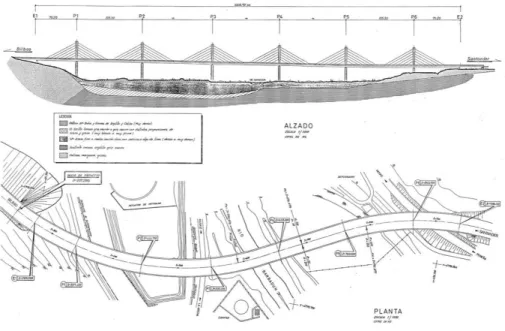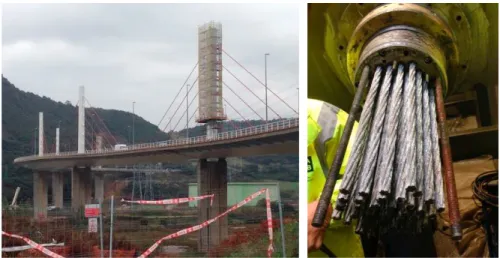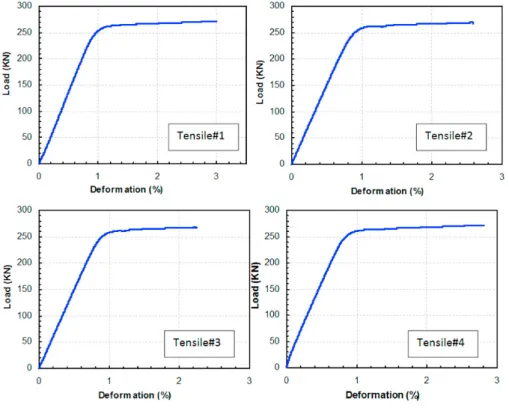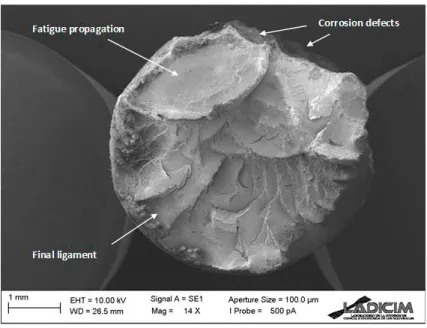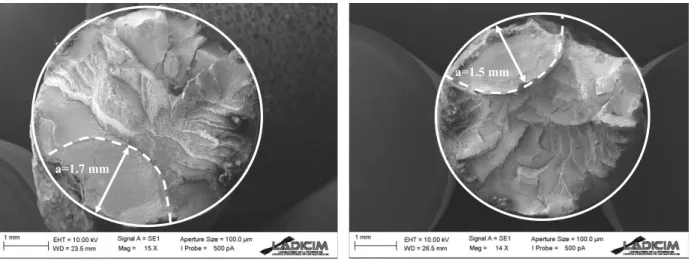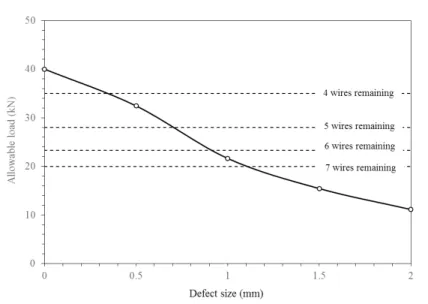ScienceDirect
Available online at Available online at www.sciencedirect.comwww.sciencedirect.com
ScienceDirect
Structural Integrity Procedia 00 (2016) 000–000
www.elsevier.com/locate/procedia
2452-3216 © 2016 The Authors. Published by Elsevier B.V.
Peer-review under responsibility of the Scientific Committee of PCF 2016.
XV Portuguese Conference on Fracture, PCF 2016, 10-12 February 2016, Paço de Arcos, Portugal
Thermo-mechanical modeling of a high pressure turbine blade of an
airplane gas turbine engine
P. Brandão
a, V. Infante
b, A.M. Deus
c*
aDepartment of Mechanical Engineering, Instituto Superior Técnico, Universidade de Lisboa, Av. Rovisco Pais, 1, 1049-001 Lisboa,
Portugal
bIDMEC, Department of Mechanical Engineering, Instituto Superior Técnico, Universidade de Lisboa, Av. Rovisco Pais, 1, 1049-001 Lisboa,
Portugal
cCeFEMA, Department of Mechanical Engineering, Instituto Superior Técnico, Universidade de Lisboa, Av. Rovisco Pais, 1, 1049-001 Lisboa,
Portugal
Abstract
During their operation, modern aircraft engine components are subjected to increasingly demanding operating conditions, especially the high pressure turbine (HPT) blades. Such conditions cause these parts to undergo different types of time-dependent degradation, one of which is creep. A model using the finite element method (FEM) was developed, in order to be able to predict the creep behaviour of HPT blades. Flight data records (FDR) for a specific aircraft, provided by a commercial aviation company, were used to obtain thermal and mechanical data for three different flight cycles. In order to create the 3D model needed for the FEM analysis, a HPT blade scrap was scanned, and its chemical composition and material properties were obtained. The data that was gathered was fed into the FEM model and different simulations were run, first with a simplified 3D rectangular block shape, in order to better establish the model, and then with the real 3D mesh obtained from the blade scrap. The overall expected behaviour in terms of displacement was observed, in particular at the trailing edge of the blade. Therefore such a model can be useful in the goal of predicting turbine blade life, given a set of FDR data.
© 2016 The Authors. Published by Elsevier B.V.
Peer-review under responsibility of the Scientific Committee of PCF 2016.
Keywords: High Pressure Turbine Blade; Creep; Finite Element Method; 3D Model; Simulation.
* Corresponding author. Tel.: +351 218419991.
E-mail address: amd@tecnico.ulisboa.pt
Procedia Structural Integrity 5 (2017) 55–62
2452-3216 2017 The Authors. Published by Elsevier B.V.
Peer-review under responsibility of the Scientific Committee of ICSI 2017 10.1016/j.prostr.2017.07.062
10.1016/j.prostr.2017.07.062 2452-3216
ScienceDirect
Structural Integrity Procedia 00 (2017) 000–000
www.elsevier.com/locate/procedia
2452-3216 © 2017 The Authors. Published by Elsevier B.V.
Peer-review under responsibility of the Scientific Committee of ICSI 2017.
2nd International Conference on Structural Integrity, ICSI 2017, 4-7 September 2017, Funchal,
Madeira, Portugal
Analysis of the environmental degradation effects on the cables of
“La Arena” bridge (Spain)
J.A. Álvarez
a*, R. Lacalle
a,b, B. Arroyo
a, J. Sainz-Aja
a, I. Sosa
a, C. Alonso
c a LADICIM, University of Cantabria, Av. Los Castros 44, 39005 Santander, SpainbINESCO Ingenieros, CDTUC, Av. Los Castros, 44, 39005, Santander, Spain
cStructural and Mechanical Engineering Department, University of Cantabria, Av. Los Castros 44, 39005 Santander, Spain
Abstract
After nearly 25 years of service, some of the wires of the tendons of “La Arena” bridge (Spain) started to exhibit the effects of environmental degradation processes. “La Arena” is cable-stayed bridge with 6 towers and a reference span between towers of about 100 meters. After a maintenance inspection of the bridge, evidences of corrosion were detected in some of the galvanized wires of the cables. A more in-deep analysis of these wires revealed that many of them exhibited loss of section due to the corrosion process. In order to clarify the causes of this degradation event and to suggest some remedial actions, an experimental program was designed. This program consisted of tensile and fatigue tests on some strand samples of the bridge together with a fractographic analysis of the fracture surfaces of the wires, its galvanized layer thickness and some hydrogen measurements (hydrogen embrittlement could be another effect of the environmental degradation process).Once the type and extension of the flaws in the wires was characterized, a structural integrity assessment of the strands was performed with the aim of quantifying the margins until failure and establishing some maintenance recommendations.
© 2017 The Authors. Published by Elsevier B.V.
Peer-review under responsibility of the Scientific Committee of ICSI 2017.
Keywords: Cable-stayed bridge; environmental assisted degradation; corrosion; fatigue.
* Corresponding author. Tel.: +34 942 201837
E-mail address: alvareja@unican.es
ScienceDirect
Structural Integrity Procedia 00 (2017) 000–000
www.elsevier.com/locate/procedia
2452-3216 © 2017 The Authors. Published by Elsevier B.V.
Peer-review under responsibility of the Scientific Committee of ICSI 2017.
2nd International Conference on Structural Integrity, ICSI 2017, 4-7 September 2017, Funchal,
Madeira, Portugal
Analysis of the environmental degradation effects on the cables of
“La Arena” bridge (Spain)
J.A. Álvarez
a*, R. Lacalle
a,b, B. Arroyo
a, J. Sainz-Aja
a, I. Sosa
a, C. Alonso
c a LADICIM, University of Cantabria, Av. Los Castros 44, 39005 Santander, SpainbINESCO Ingenieros, CDTUC, Av. Los Castros, 44, 39005, Santander, Spain
cStructural and Mechanical Engineering Department, University of Cantabria, Av. Los Castros 44, 39005 Santander, Spain
Abstract
After nearly 25 years of service, some of the wires of the tendons of “La Arena” bridge (Spain) started to exhibit the effects of environmental degradation processes. “La Arena” is cable-stayed bridge with 6 towers and a reference span between towers of about 100 meters. After a maintenance inspection of the bridge, evidences of corrosion were detected in some of the galvanized wires of the cables. A more in-deep analysis of these wires revealed that many of them exhibited loss of section due to the corrosion process. In order to clarify the causes of this degradation event and to suggest some remedial actions, an experimental program was designed. This program consisted of tensile and fatigue tests on some strand samples of the bridge together with a fractographic analysis of the fracture surfaces of the wires, its galvanized layer thickness and some hydrogen measurements (hydrogen embrittlement could be another effect of the environmental degradation process).Once the type and extension of the flaws in the wires was characterized, a structural integrity assessment of the strands was performed with the aim of quantifying the margins until failure and establishing some maintenance recommendations.
© 2017 The Authors. Published by Elsevier B.V.
Peer-review under responsibility of the Scientific Committee of ICSI 2017.
Keywords: Cable-stayed bridge; environmental assisted degradation; corrosion; fatigue.
* Corresponding author. Tel.: +34 942 201837
E-mail address: alvareja@unican.es
© 2017 The Authors. Published by Elsevier B.V.
1. Introduction
This paper analyses the effects of the environmental degradation process suffered by the strands of the “La Arena” bridge (Spain). The corrosion evidences together with the in-service fracture of some wires of the strands were the alarm signals that motivated this study. The tasks performed in order to clarify the failure of the wires are divided into two main sections: laboratory tests and structural integrity assessment.
Hydrogen measurements, tensile and fatigue tests and Scanning Electron Microscope (SEM) observations are among the main activities of the first part of the work. The results of these experimental tasks were analysed together with the conclusions of the analytical structural integrity assessment carried out.
1.1. Bridge description
“La Arena” is cable-stayed bridge with 6 towers and a reference span between towers of about 100 meters. The bridge, built in the 90´s, is located in the highway between Santander and Bilbao (Spain) over the mouth of Barbadún River and less than 1 km far from the Atlantic Ocean. Figure 1 shows a general drawing of the bridge. The most characteristic structural feature of the bridge are the towers and the cables that hold the bridge. The cables consist of series of strands of 7 galvanised wires each (Ø 5 mm).
Fig. 1.General drawing of “La Arena” bridge (www.arenasing.com). 1.2. Failure description
During a maintenance inspection of the bridge (see Figure 2), some fractured wires were detected. The fractures seemed to be linked to an environmental degradation process since some corrosion evidences –oxides and loss of material- were also observed. The fracture surfaces presented a quasi-planar typology (see Figure 3), with some apparently brittle features and some areas probably corresponding to fatigue crack growth. Loss of section also seems to have played a role in the failures as this type of defects are always present in the vicinity of fracture surfaces (see Figure 4). The reduction of area due to corrosion was between 10 and 20% for all the broken wires. The number of detected broken wires per strand was usually 2 or 3, being the central wire always undamaged. It is also important to notice that the original zinc-base protective coating is partially missing in some of these wires.
Fig. 2. Left: Bridge during inspection tasks; right: strands conforming one of the bridge's tendons during an inspection.
Fig. 3.Fracture surfaces of two of the broken wires detected during maintenance inspection of the bridge.
2. Experimental analysis
2.1. Hydrogen measurements
Several elemental hydrogen measurements were performed in two wires: one with an undamaged zinc coating and the other corresponding to a sample that suffered an in-service failure. This last sample exhibited clear corrosion evidences and the zinc-base coating was partially missed. Five different measurements were done in each sample. The values obtained are summarised in Table 1. As it can be observed, the corroded samples presents a significantly higher hydrogen concentration than the un-damaged one. The reason for this high concentration can be the presence of oxides in the surface of the material, but at the same time, it could be an indicative of an embrittlement process in the material as indicated by Nakamura et al. (2009).
Table 1. Hydrogen measurements
Sample H2 measurements (ppm) Average value (ppm)
Un-damaged 2.30 3.76 3.22 2.03 2.05 2.67 In-service failure (corroded) 26.6 26.4 28.1 34.1 31.6 28.8
2.2. Characterisation of galvanising layer
The galvanizing layer of several brand-new strands was measured, obtaining values between 18 μm and 69 μm, and a good continuity. The galvanizing layer of another set of strands retired from service after 25 years was analysed. As a first conclusion from a visual exam, their superficial condition was not presenting any serious degradation, as far as the strands were conveniently protected from the environment during its time in service. A galvanizing thickness between 18 μm and 44 μm was found in the majority of the cases, although there were some punctual zones where it decreased up to 11 μm; no discontinuity was found in the layer. From these results, which don't show great differences between brand-new and in-service strands, it can be stated that when correctly protected the galvanizing layer does not suffer any degradation, but when the protection is not the suitable one the environment can destroy the zinc protection causing serious damage in the wire body.
2.3. Laboratory tensile tests
Four in-service wires were collected from the same tendon of the bridge and used to perform laboratory tensile tests and, again, hydrogen content analysis, as presented in Table 2 and Figure 5. In each case the test was performed in elongation control conditions up to the first wire failure (in one case, Tensile#4, a second wire containing a flaw of lower entity failed due to the stress redistribution when the first one failed). In all the cases the hydrogen content determination tests were performed on the broken wire of each strand.
Table 2. Tensile tests and hydrogen determination results.
Sample Breaking load (KN) Max load deformation (%) H2 content (ppm)
Tensile #1 272 2.97 15.9
Tensile #2 269 2.57 15.5
Tensile #3 268 2.20 22.5
Tensile #4 272 2.77 20.8
No one of the strands tested presented relatively large flaws, being all of them of low entity. Despite this fact, none of them fitted the standard requirements, presenting a rupture in one of its wires prior to reaching the minimum required breaking load or minimum required deformation.
Fig. 5. Load-Strain curves from tensile tests. 2.4. Fatigue tests
Three fatigue tests were performed on three of the seven-wire cables of the bridge. All these samples had clear corrosion evidences in their surfaces. The tests were carried out according to NF-A35-035 standard. The maximum load during these tests was 125.55 kN while the stress range was 300 MPa applying a loading frequency of 5 Hz. According to the specification of the cables, the number of cycles until failure for these loading conditions should be higher than 2·106. Table 3 summarised the results obtained in these tests. These results are far from the expected values for these type of cables.
Table 3. Fatigue tests results.
Sample Cycles until failures Fatigue #1 82945
Fatigue #2 209122 Fatigue #3 204651
Figure 6 shows a SEM image of one of the broken wires of sample Fatigue #3. This sample has been taken as an example but all the facture surfaces of the wires broken during the fatigue tests exhibit the same features. In Figure 6, 3 different regions can be observed:
Corrosion defects (loss of section). Fatigue propagation area.
Final fracture ligament.
It seems to be clear that the fatigue crack initiates from surface corrosion defects. These corrosion defects play the role of surface stress concentrators that reduce drastically the time needed for crack initiation in the fatigue process.
Fig. 6. SEM image of one of the broken wires of sample Fatigue #3.
3. Structural integrity assessment
A structural integrity assessment has been performed, following the procedures of BS7910:2013 standard, and using the software VINDIO 1.1. This assessment has allowed the fracture toughness of material the damaged wires to be estimated. Afterwards, a relationship between the size of the corrosion flaws and the allowable load has been obtained.
3.1. Determination of fracture toughness
In the sample Fatigue #3, the extension of the fatigue crack in the two first broken wires can be clearly identified (Figure 7). The effective maximum load acting on each of the wires without any of them broken is 17.94 kN (total load divided by 7), while when one of the wires is broken the total load has to be distributed among the 6 unbroken wires, so then, the effective load on each element is 20.93 kN. Given that, the wire with a deeper crack –Wire #A- (Figure 7) is supposed to be the first suffering fracture.
With these data –crack length and maximum applied load- a fracture assessment was performed using the procedures of BS7910:2013. In the analysis, Failure Assessment Diagrams (FAD) were used. As fracture toughness of the material, Kmat, was initially unknown the analysis consisted of searching a value for this parameter that made the assessment point lies exactly on the Failure Assessment Line (Figure 8). The values obtained for Kmat with the analysis were 80 MPa·m0.5 for Wire #A and 83 MPa·m0.5 for Wire #B. These values are in good agreement with the obtained by Toribio et al. (2006) for undamaged cables. These results means that, in spite of the high hydrogen contents detected in the wires, no evidences of embrittlement have been observed in fracture toughness values.
Fig. 7. Broken wires of sample Fatigue #3. Left: Wire A; right: Wire B.
Fig. 8. FAD assessment of the wires of sample Fatigue #3. Left: Wire A; right: Wire B. 3.2. Remaining strength analysis
Following again the rules of BS7910:2013, a complementary structural integrity assessment was performed in order to determine the critical load value as a function of the corrosion defect size. In this analysis, according to the results of the previous section, a value for fracture toughness of 80 MPa·m0.5 was assumed. The corrosion defects were considered as cracks taking into account that stress corrosion cracking and fatigue (or environmental fatigue) cannot be discarded as degradation processes in the strands. A straight front crack was used in the analysis. In Figure 9 the relationship between allowable load (per wire) and critical defect size can be seen. With all the 7 wires of an strand working, the critical size of a defect for a typical working load of 50% of the nominal maximum load of the strand, was about 1.1 mm. This value decreases as the number of broken wires increases, but on the other side, the results show that, for the working conditions of the bridge, theoretically at least 5 wires must have corrosion damage before the collapse of the whole strand. The results of this analysis are in good agreement with the behavior observed in in-field failures.
a=1.7 mm
Fig. 7. Broken wires of sample Fatigue #3. Left: Wire A; right: Wire B.
Fig. 8. FAD assessment of the wires of sample Fatigue #3. Left: Wire A; right: Wire B. 3.2. Remaining strength analysis
Following again the rules of BS7910:2013, a complementary structural integrity assessment was performed in order to determine the critical load value as a function of the corrosion defect size. In this analysis, according to the results of the previous section, a value for fracture toughness of 80 MPa·m0.5 was assumed. The corrosion defects were considered as cracks taking into account that stress corrosion cracking and fatigue (or environmental fatigue) cannot be discarded as degradation processes in the strands. A straight front crack was used in the analysis. In Figure 9 the relationship between allowable load (per wire) and critical defect size can be seen. With all the 7 wires of an strand working, the critical size of a defect for a typical working load of 50% of the nominal maximum load of the strand, was about 1.1 mm. This value decreases as the number of broken wires increases, but on the other side, the results show that, for the working conditions of the bridge, theoretically at least 5 wires must have corrosion damage before the collapse of the whole strand. The results of this analysis are in good agreement with the behavior observed in in-field failures.
a=1.7 mm
Fig. 9. Allowable load vs. defect size.
4. Conclusions
In this paper, the environmental degradation process of the strands of “La Arena” bridge (Spain) has been analysed. Hydrogen measurements, SEM observations, mechanical tests and a structural integrity assessment have been the tools used in order to clarify the failure of the wires of the strands. The main conclusions of the work are:
The cause of the failure is the corrosion process suffered by the wires. The main effect of this corrosion is the loss of material in the components that reduces significantly the strength of the wires.
As observed in tensile tests and in the structural integrity assessment performed, the corrosion defects should be relatively large in order to promote a failure under quasi-static loading conditions.
Despite the high hydrogen content detected, there is no clear affection to tensile strength properties or to the fracture toughness of the material.
The fatigue life of the strands drops drastically when corrosion flaws are present, even in an inert environment and with relatively small defect sizes. These defects act as stress concentrators reducing the initiation period of the fatigue process.
The presence of corrosion damage in almost all wires is needed for the global collapse of a tendon of the bridge.
In view of these conclusions, two main remedial actions are recommended. First of them is the replacement of those strands with generalised corrosion in all their wires. The second is to control the environment and the humidity levels in order to preserve the properties of the galvanising layer as no fractured wires are expected if this coating is in good condition.
References
Arenas y Asociados, www.arenasing.com.
BS7910:2013, Guide to methods for assessing the acceptability of flaws in metallic structures, British Standard Institution, 2013.
Nakamura, S., Suzumura K., “Hydrogen embrittlement and corrosion fatigue of corroded bridge wires”, Journal of Constructional Steel Research 65 (2009), 269-277.
NF-A35-035, Produits en acier. Fils lisses et torons de precontrainte a 7 fils revêtus por inmersion à chaud de zinc ou d´alliage zinc-aluminium (2011).
Toribio, J., Valiente, A., “Failure analysis of cold drawn eutectoid steel wires for prestressed concrete”, Engineering Failure Analysis 13 (2006), 301-311.
